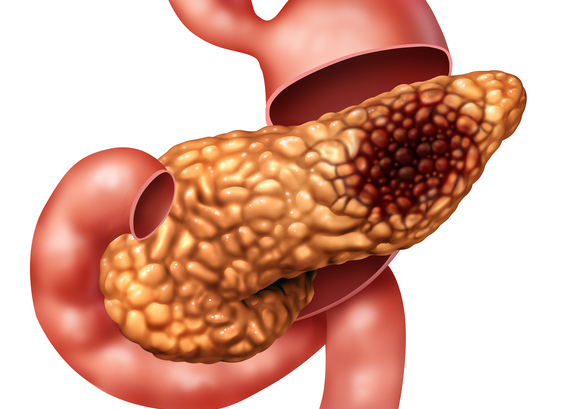
In a study published in Nature Medicine, researchers have made groundbreaking discoveries about the pre-metastatic environment in the liver in the context of pancreatic cancer. Their findings reveal potential new strategies for monitoring and treating patients with the disease, and provide insights into the prognosis for metastases.
The idea of a pre-metastatic niche, where distant organs such as the liver, lung, bone, and brain undergo changes that make them conducive to future metastases, was first described by co-senior author David Lyden of Weill Cornell Medical Center in 2005. “Until now, no one has looked carefully at any of these organs to see if there are any molecular, cellular, and metabolic changes that could occur in the organ suggesting the likelihood of metastasis.”
The study is the first to extensively examine the liver as a pre-metastatic site in pancreatic cancer, classifying patients according to their metastatic risk, timing, and organ site. By analyzing liver tissues from 49 pancreatic cancer patients and 19 control patients, the research team identified significant changes that occur in the liver before metastasis.
“We did the full omics study,” first author Linda Bojmar notes, referring to their comprehensive analysis of genomic, transcriptomic, proteomic, and metabolomic data. This multi-parametric profiling revealed distinct differences in the liver environment of patients who later developed metastases compared to those who did not.
Using the above parameters, a machine-learning-based model was developed that successfully predicted the metastatic outcome at the time of surgery with 78% accuracy.
One of the most striking findings of the study is the role of neutrophil extracellular traps (NETs) in the pre-metastatic liver. NETs are web-like structures formed by neutrophils, and they can trap cancer cells, facilitating metastasis. “In the worst outcome group, it’s really the NETs, together with a gene that we identified called SORT1, that stood out,” Bojmar explains. This combination of NETs and upregulated expression of SORT1 was prevalent in patients who developed liver metastases within a year of surgery.
In addition to NETs, the study highlighted the importance of T cells in the pre-metastatic liver environment. A lack of T cells, particularly cytotoxic CD8+ T cells, was associated with a poor prognosis. “If you have a scarcity or paucity of T cells, that’s a very bad sign,” Lyden says, explaining that this immune suppression in the liver, driven by inflammation rather than fatty liver disease, creates an environment in the liver conducive to metastasis.
The findings of this study have implications for the management and treatment of pancreatic cancer patients. One key recommendation is to perform liver biopsies on patients undergoing surgery for pancreatic cancer. “We recommend having a liver biopsy, even for patients with locally advanced pancreatic cancer,” Lyden advises. This biopsy can help predict whether a patient is likely to develop liver or lung metastases and tailor their treatment accordingly. For example, about 20% of pancreatic cancers metastasize to the lung only. Those patients will likely display abundant, active T cells—as opposed to exhausted T cells—and a robust immune system for immune therapy. And on the gene level, interferon-related factors are upregulated. “That would also be the group that gets extrahepatic metastases to the lung or other site because the liver did, in fact, have T lymphocytes and natural killer cells present,” Lyden explains.
The study suggests focusing on extensive chemotherapy rather than surgery for patients at high risk of liver metastases, identified by the presence of NETs and lack of T cells. “There’s no reason to put that patient through a Whipple procedure, which is really an extensive surgery with a lot of complications,” Lyden explains. Instead, these patients could benefit from targeted therapies that address the liver’s underlying inflammatory and immune suppression.
For the 20% of pancreatic cancers that metastasize to the lung only, the study also provides early clues. “What you see is a very prominent T cell response, with active T cells compared with exhausted T cells, which you can see from the tissue,” Bojmar explains.
The authors suggest an increased role of frequent imaging. “If you can define different subgroups of pancreatic cancer patients based on their likelihood to metastasize, maybe we can do more frequent imaging, identify a liver metastasis, and surgically remove it before it spreads throughout the liver,” Lyden says.
The study’s findings also open new research and therapy development avenues. Targeting NET formation, for example, could become a viable therapeutic strategy. “There are new drugs to block NET formation,” Lyden mentions, noting that some of these drugs, such as PAD4 or DNAse inhibitors, are already approved or close to approval by the FDA. These drugs could potentially be combined with existing therapies to improve outcomes for patients at high risk of metastasis.
Moreover, the study underscores the need for similar research in other cancers that commonly metastasize to the liver, such as colorectal and gastric cancers. “We would recommend getting pre-metastatic liver biopsies for not just pancreatic cancer, but gastric cancer, and colorectal cancer,” Lyden suggests. The team also recommends pre-metastatic lung biopsies for tumors that normally metastasize there such as melanoma or breast cancer. “Don’t sit around and wait for the metastases to spread in the lung or liver if there are signs that the prognosis may be favorable.”
Understanding the pre-metastatic environment in different cancers could lead to more effective and personalized treatment strategies. “This goes beyond pancreatic cancer,” says Lyden. “The implications of this study extend to other cancers and offer new hope for improving patient outcomes through targeted and personalized therapies.”
